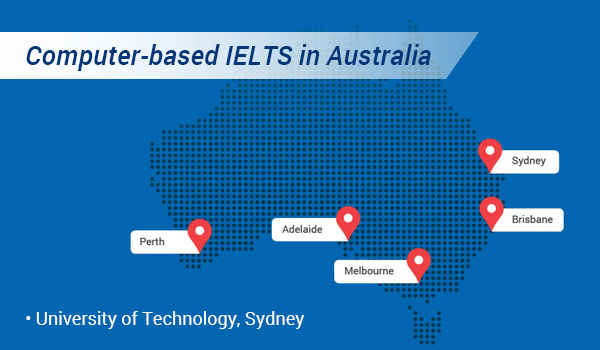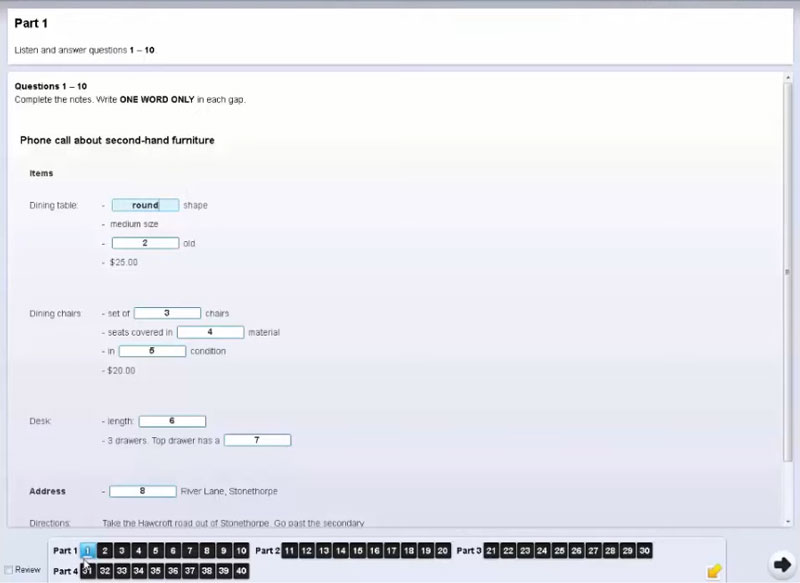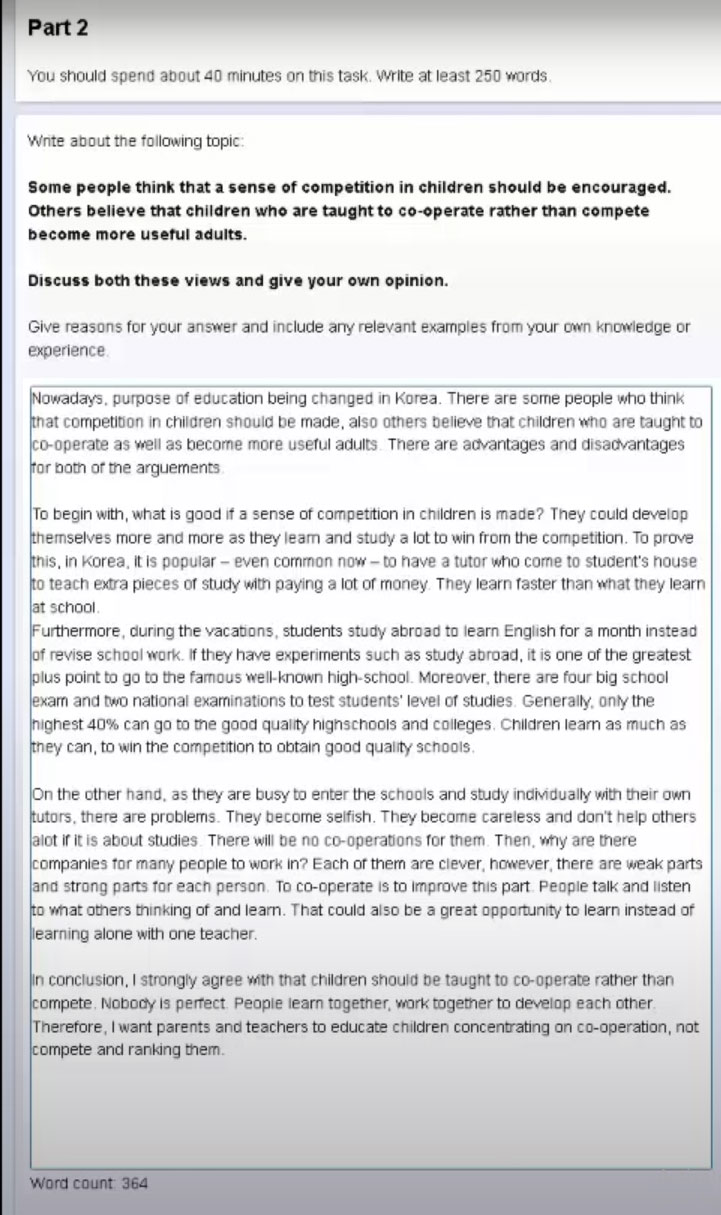
Computer-Based IELTS Exam: 5 Things To Keep in Mind
IELTS has been traditionally conducted as a paper-based test for almost three decades now. However, with the emergence of computer-based technologies and its increasing trend to deliver education and tests, IELTS has now introduced a computer-based IELTS test, commonly known as CBT. In addition to the existing paper-based test (PBT), the Computer-based IELTS was first introduced in Australia in December 2017.
It must be noted that both Computer-based IELTS and Paper-based IELTS test options remain open for test-takers.
Computer-based IELTS: Similarities and Advantages
IELTS test remains the same in both, CBT and PBT. The test format, question types, scoring criteria, and difficulty levels, they all as same as the Paper-based IELTS test. The only difference, rather an addition, is that earlier candidate could take the IELTS test on paper but now, they can have the option to give it on the computer as well. A key advantage of Computer-based IELTS is that there are multiple sessions available in a single day, and faster delivery of results (usually within 3-5 days). The trend of Computer-based IELTS has received a great response, especially during this pandemic. Candidates around the world find this more favorable, as this helps maintain social distancing norms as well. There are limited seats and more dates options with up to 7 days a week and nearly 3 times a day! In all probability, the future will be one, wherein the Computer-based IELTS and Paper-based IELTS will complement each other, as equally relevant and critical testing methodologies.

Frequently Asked Questions in Computer-based IELTS Test
If you are a test-taker, here are five crucial points you must keep in mind about the IELTS CBT:
- Which components of the test come under CBT?
- If I take the CBT, how long will it take for me to get my results?
- Will taking the Computer-based IELTS, affect my performance and score?
- How does the Computer-based IELTS test work?
- What are the advantages of a computer-based testing for test-takers?
1. Which components of the test come under CBT?
Just like Paper-Based IELTS, the listening, reading, and writing modules will be taken in the Computer-based IELTS test. This includes the type of questions asked, the format, timings, and also marking. Also, the IELTS Speaking test remains the same and will be conducted face-to-face with a human examiner. Human examiners will evaluate the Writing and Speaking components. The only difference is IELTS Speaking in conducted within a week of test day in PBT while the same is conducted on the same day in CBT.

2. If I take the CBT, how long will it take for the test results to be made available?
The test results will be available in 3-5 days.
3. Will taking the Computer-based IELTS, affect my performance and score?
No. Like every new thing, it will take a little time to get familiar with the Computer-based IELTS. But, it does not hamper the results in any manner. In fact, according to several reviews, candidates find the CBT more convenient compared to Paper-based IELTS. Plus, the entire test format, questions, and scoring criteria are the same for both, thus, the delivery of the IELTS test will not affect in any manner. Only your performance will determine your scores.
4. How does the Computer-based IELTS test work?
One significant change in CBT is that test centres are significantly less crowded. Rest all remain the same, including the order of the test, Listening, Reading, Writing, and finally Speaking. As mentioned before, a human evaluator conducts the Speaking component. Also, the Speaking test is conducted on the same day as the rest of the tests.
Paper-based IELTS test allowed an extra 10 minutes in the Listening module to note down the answers, Computer-based IELTS gives 2 minutes to check the answers. Every test-taker is allotted a computer booth and a headset for the Listening component.
Once you click on 'Start Test' on the introductory screen, it takes you to the questions. There's a clock at the top of the screen which shows you how much time you are left with before the other components begin. The clock will turn red and flash when you have ten and five minutes left, for the Reading and Writing test. The timer automatically stops when the test ends. Instructions for each part are in a box at the top of the screen. The navigation bar at the bottom can be used to move from one question to the next. Alternatively, you could click on a number to go directly to that question. You can use the back arrow to navigate to the last question. In case you have doubts on whether a specific response is correct, you can click on that answer number at the bottom bar, review, and come get back to the current question. Responses can be reviewed and changed anytime till the test ends. There is an option to highlight text, prepare notes, and select the text as well. All the answers are saved automatically and you need not press 'Enter' or search for a 'Save' option.

5. What are the advantages of a Computer-based IELTS test for test-takers?
Intuitively speaking, the most significant advantages of CBT are expected to be in the Writing component of IELTS. Typing is indeed more comfortable, and faster than writing down the answers. There is also more scope for editing, re-structuring sentences anytime within the given timeframe. No fear of strikethroughs, arrows, or even lousy handwriting. Further, the word count appears on the screen, and one does not have to count all the words manually.

With the Computer-based IELTS, you get to take IELTS with a small group of other people, which is a remarkable shift from PBT. Smaller groups are usually considered to be better, since they are less noisy, and therefore, as a test-taker, it is easier to concentrate, and not be distracted.
Conclusion
The Computer-delivered IELTS test gives an additional option to the candidates. Thus, it was very important for us to give you an introduction to CBT and a brief on how it is to take the IELTS test on a computer. This way, you are aware of the basics before proceeding further with the practice. Once you are aware that taking the test on a computer versus on paper does not affect your performance and score in IELTS, you can enjoy its advantages, but first, start getting familiarized with the test by taking few Computer-based IELTS practice tests.
Follow these tips, get enough practice for Computer-based IELTS test, book the IELTS test online and ace it!
At IELTS Tutorials, we have both expertise and experience in helping thousands of test-takers achieve their goal of bagging a good score in IELTS. If you want assistance in improving your score, sign up at IELTS Tutorials, or avail of our IELTS Writing Correction Services today!
